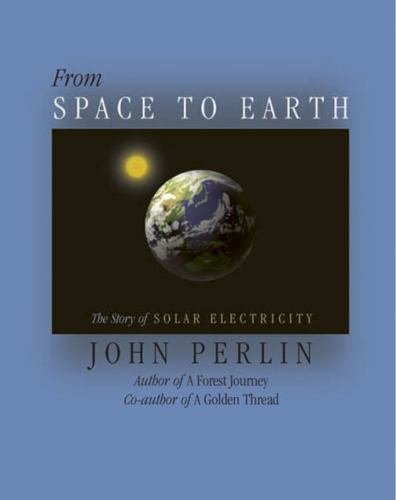From Space to Earth: The Story of Solar Electricity

Physical Copy:
By: John Perlin
Rating: C
This was the last of my solar energy exploration books. As the title suggests, this book told the history of applications of solar energy. At this point, I am shelving this effort. It has become abundantly clear that the technology is not ready. The grid, the panels, the batteries, none of them are ready for mass production or use. I will take another look at the technology in a few years. But right now it does not make sense.
Here are the interesting takeaways from the book.
The First Mass Earth Market
With modules producing electricity for around forty times the price Americans were paying for electricity generated at power plants, no one at the company expected to compete with the utilities. “It was never even in our thinking,” asserted Clive Capps, international sales representative for Solar Power Corporation in the early 1970s. “Most of the applications where it is economically sensible to use these modules are in remote locations, where it is difficult to run a wire,” the company declared in 1973.
Father Verspieren Preaches the Solar Gospel in Mali
Photovoltaic water pumping, in Verspieren’s opinion, is the marriage of the century - uniting water and the sun. There is no chance of divorce, the priest correctly predicted more than sixteen years ago.
Electrifying the Unelectrified
Stand-alone power systems have become the poorer nations’ only hope. Diesel generators were once considered the answer, but their continued functioning relies largely on fuel trucks arriving on schedule. During the rainy season, the trucks often show up late, if at all.
The hundreds of millions of people in the developing world who do not own diesel generators spend around $20 billion a year on ad-hoc solutions such as kerosene lamps, candles, or even open fires for lighting, and batteries for radios, TVs, and cassette players.
The use of photovoltaics for individual remote homes in the developing world was pioneered by the French in 1978.
Of the estimated 400,000 home solar systems in the world, 60,000 are in Kenya.
Hansen devised a new approach. He realized that if the burden of the down payment could be eliminated, the customer base would rise significantly.
One way to lower the entrance cost, Hansen figured, would be to sell a photovoltaic service rather than a system. Instead of expecting the customer to purchase and maintain the capital equipment, an investor-owned solar utility could collect a monthly fee for providing reliable solar electricity.
The solar utility concept works for both consumer and investor. “The consumers keep their capital,” so there’s no risk for them, Hansen explained. “Since they don’t own the equipment, they’ll simply stop paying the fee if the service isn’t good. They therefore feel pretty secure that we are going to go out there and make sure that everything is operating.” Conversely, those leasing a system tend to take good care of the equipment since the company can easily remove the power unit. No one “wants to lose their service once they have electric lights and have reduced their dependency on dry cells,” Hansen observed. “We either get the money or repossess the unit.” In addition, investors can look forward to an excellent return on their capital and that prospect attracts more expansion capital.
Solarizing the Electrified
With the inclusion of photovoltaics in mortgages managed by two of America’s largest lenders, Fannie Mae and GMAC Inc., photovoltaics for new houses become economically appealing. Amortizing a photovoltaic installation over a thirty-year period makes purchasing solar electricity no different than paying the electric bill each month - except that the power plant belongs to the homeowner and it doesn’t pollute.
To make photovoltaics as financially appealing as possible, Markus Real, among others, “realized that installations had to be better integrated into the construction and that components had to be developed which builders could put in routinely.”
The Silent Revolution Continues
In a deregulated electric market, photovoltaics have a much better chance to flourish than large solar mirror installations or wind machines.
